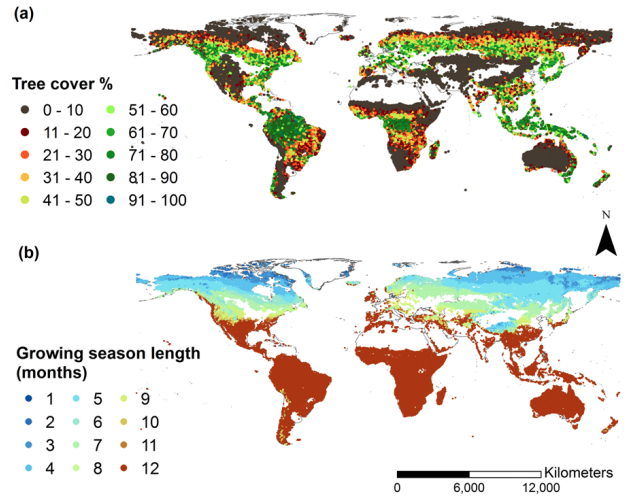Check out the article recently published by ALC Research Associate, Gabriela Bucini, titled, “Climate seasonality, fire and global patterns of tree cover“. Click the link to read the article!
Abstract: Vegetation systems with varying levels of tree cover are widely distributed globally, but the determinants of vegetation and tree cover still lack a consistent global framework. How these systems’ distribution responds to spatial variability of climate seasonality and associated fire regimes therefore remains unclear. Here, we focus on tree cover distribution at the global level. We develop a model that accounts for the role of seasonality and moisture in the dynamics that link climate, fire and tree cover. We choose predictors that have a clear link to functional processes that control tree physiology and growth, such as freezing tolerance (accounted for in the variable growing season length, GSL) and the balance between water availability and evapotranspiration (accounted for in the variables moisture index and moisture season length). The results show that the relative importance of climate factors and fire frequency as determinants of tree cover hinges on the GSL conditions. For example, significant interactions of tree cover with fire only occur in regions with GSL of 6–7 months or of 12 months. Our data also show a general relationship between maximum tree cover and moisture at the global level that is not visible when examining precipitation. Discontinuities in this relationship occur with frequent fires found under specific levels of seasonal moisture and temperature. A common climatic trait of frequent fires is moisture with a pronounced seasonality and an overall negative balance over the growing season. Frequent fires allow grassland to persist where there could be savanna/woodland as in the case of the North American grasslands. Frequent fires also allow savanna to persist where there could be forest, as found in tropical regions. This quantitative work is useful in improving large-scale land-atmosphere models as well as for identifying conditions of vulnerability for ecosystem diversity.
Keywords: Climate Seasonality, globe, fire, open-canopy ecosystems, tree cover

